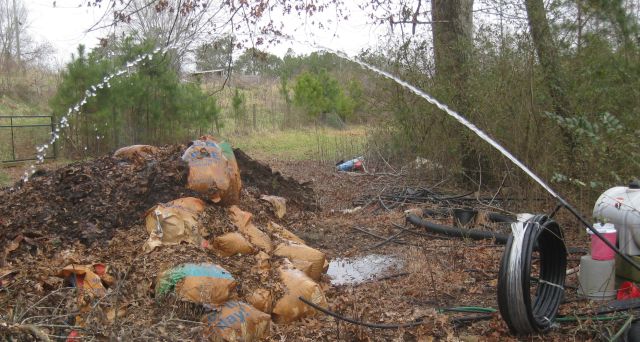We had some cold days (for Georgia) with temps in mid teens, but that is past and I am emerging from my winter funk. Friday I cranked up the bobcat and worked it a couple hours – moved pine and other logs up the hill to the contour ditches where they will decompose with time; moved two old tractor cultivators from alongside the drive, where they could snag an unwary driver, to a show off location; and turned >150 leaf bags collected in the fall into a semblance of a compost heap.
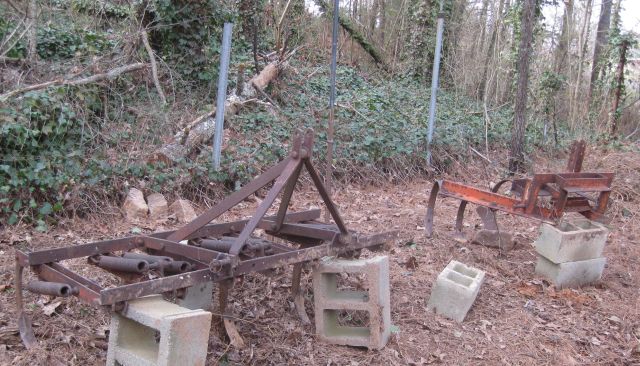
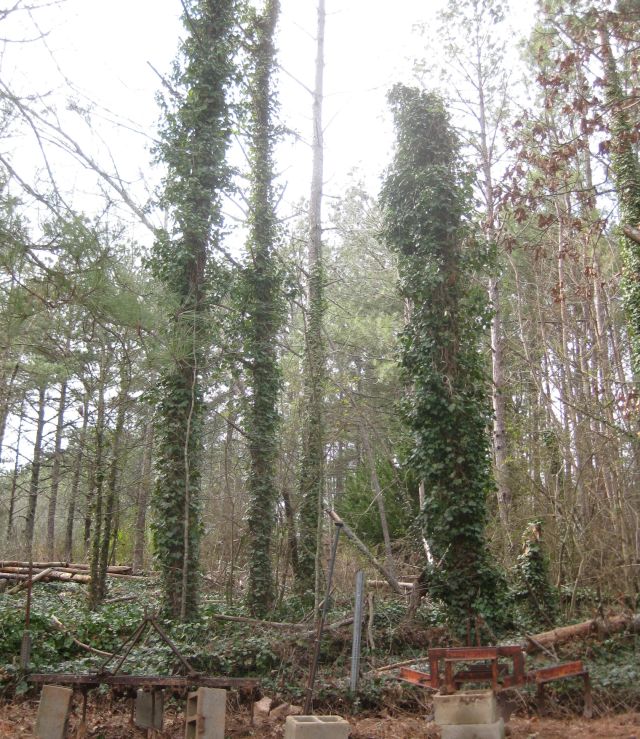
Saturday I weeded my first of 15 raised beds and added wood ash and finished compost.
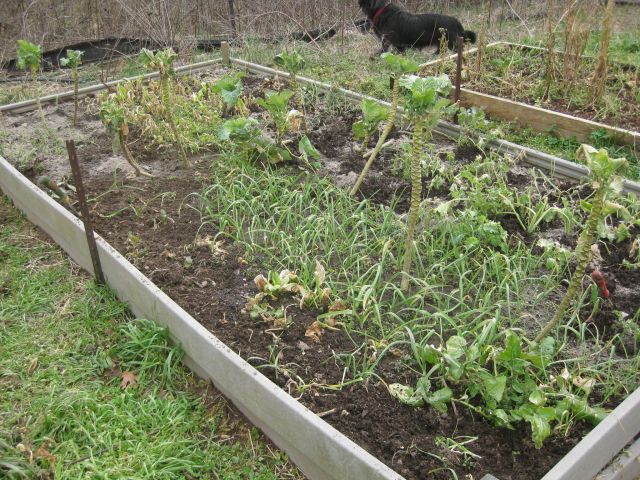
The turnips survived the cold temps and are edible, not so the radishes. The greens were set back by the cold but will recover, all the more quickly without weed competition.
And today, I decided to water the compost heap. I have described my rainwater collection system and tanks holding about 6,000 gallons. All the tanks are full and winter rains go to waste. So why not use some of the water now, not only for irrigating the fruit trees, but also to fire up the compost. Though I added finished compost to the leaf heap nothing happens without moisture. I use 1.25″ pipes to move water and to this is connected a regular hose for watering the compost. This is inefficient – the hose is 5/8″ diameter 100 ft long and connects via a faucet – three negatives right there a) diameter too small; b) length too long; and c) faucet configuration disturbs water flow. I have two 3/4″ diameter 100 ft hoses but they are used elsewhere and are also too long. It took just 10 minutes to make some big improvements. I replaced the faucet with 3/4″ in line PVC valve, and I selected 2 – 20 foot lengths of 3/4″ plastic coil pipe which I connected.
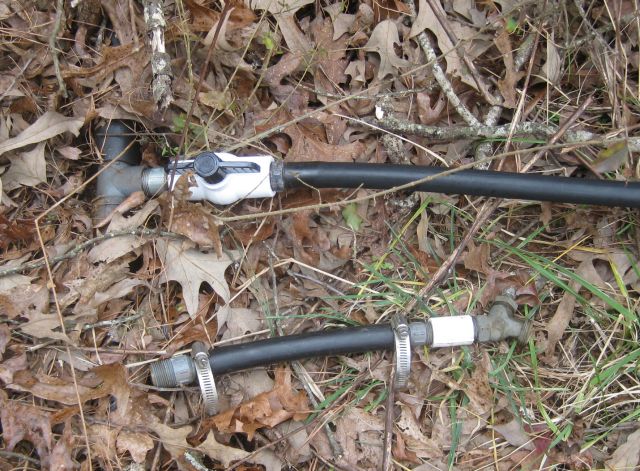
Water flow was much better than with the garden hose.
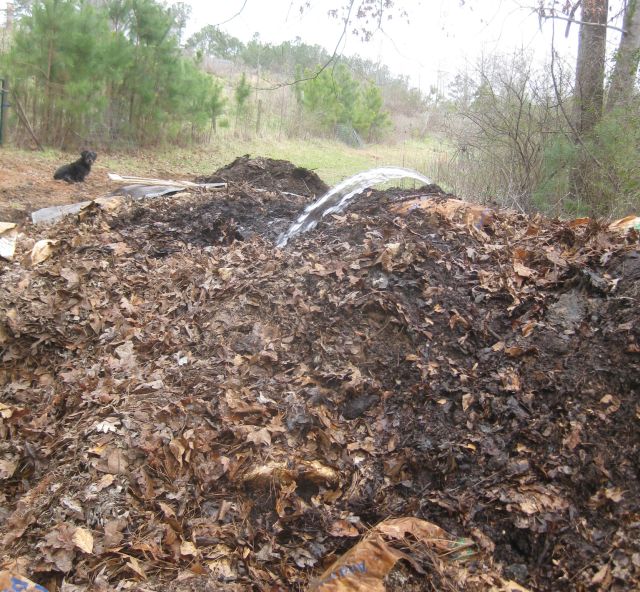
As I moved the pipe to water different parts of the heap, the connection between the 2 lengths separated. I was impressed with the vigor of the water jetting from the shortened pipe and it occurred to me, why not just use a 20 foot length and the increased water pressure will get the water to where it is needed. The image at the head of this post, also below, shows the increased pressure when just a 20 foot length is used (similar dynamics to the flow of electrical current through a cable, the calculations for which I have included elsewhere on this site).

So I was able to quickly water the heap, and then I covered with a tarp the northern end (winter gusts come from the northwest). When the heap is compacted I will dispense with the tarp. I know tarps conserve heat in the heap which accelerates the action, but then you need to remove it for the rains and, since I am in no rush and have an ample supply of finished compost, I will let the heap proceed at its own pace.
This morning was productive – I also chainsawed an oak and dogwood which had fallen down – though there limbs are small diameter, I added them to the firewood pile.
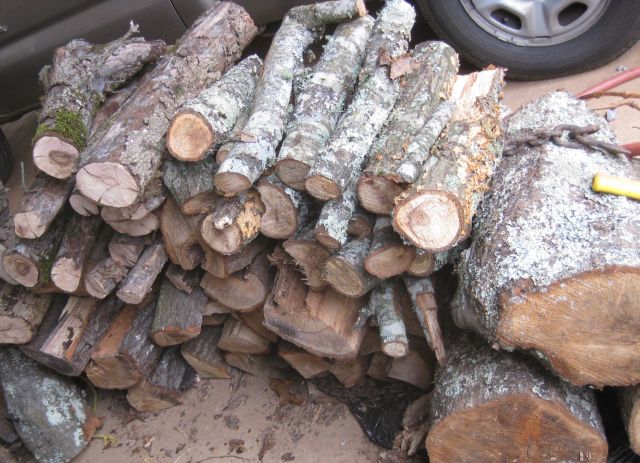
And I weeded another bed and picked turnips which we enjoyed in our lunch salad.
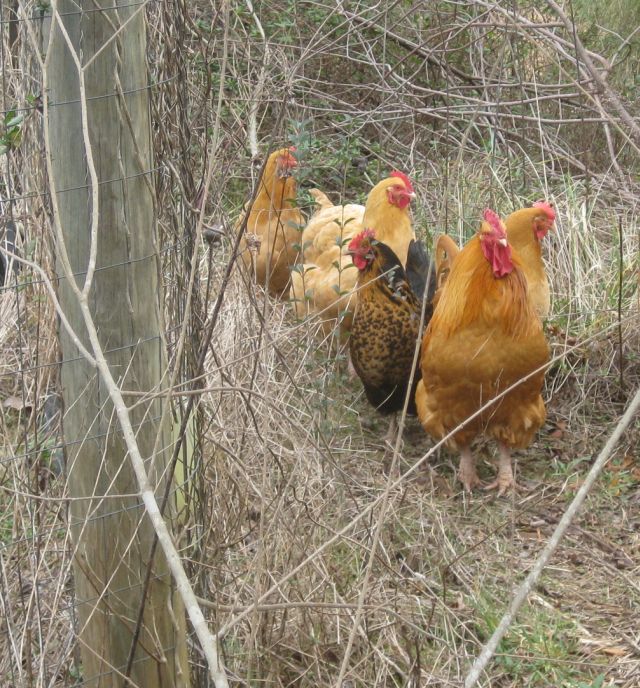
And there were 5 eggs today and 3 yesterday – the longer days are moving the hens back to production. A productive morning.

